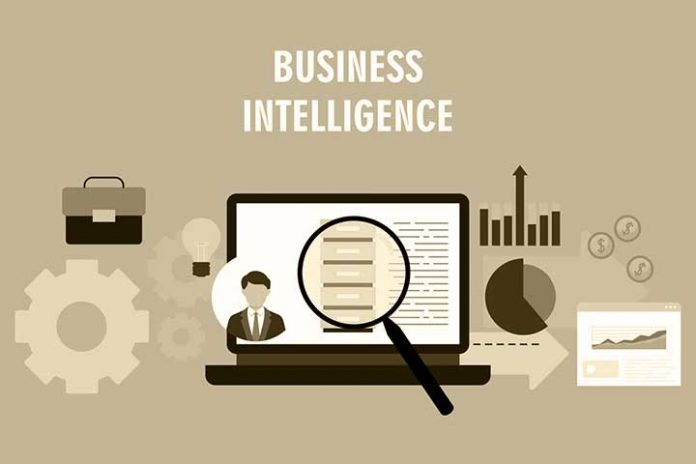Business Intelligence, is the set of processes that allows for analyzing how a company works. Business Intelligence (BI) helps make decisions based on reading data. In practice, implementing BI in an enterprise means having a comprehensive view of all the data in the organization and then using this data to drive change, eliminate inefficiencies, and quickly adapt to market and demand changes.
History of Business Intelligence
BI has a relatively short history. It emerged in the 1960s as a system for sharing information between organizations. In the 1980s, it was used to make decisions and transform data into information, later becoming IT-based service solutions. Today, factors like flexible self-service analytics are prioritized. This means users can access data from different locations, gain unified understanding, collaborate with other teams, and gain the visibility needed to make faster, smarter decisions consistently. All this implies the management of data on reliable platforms, the training of corporate users, and a system that makes it possible to obtain information quickly.
Types of processes in Business Intelligence
In recent years, BI has evolved to include processes and activities that improve its performance. Among the most important processes, we can point out the following:
1. Data mining
It’s about using databases, statistics, and machine learning to uncover trends in larger data sets.
2. Reporting
It consists of sharing data analysis with stakeholders so everyone can draw their conclusions and make decisions.
3. Performance metrics and benchmarks
It compares current company performance data with historical data to track performance against targets.
4. Descriptive analyzes
It is about preliminary data analysis to discover what happened about a specific topic.
5. Consultations
A user can ask specific questions related to the data, and Business Intelligence extracts the answers from the data sets.
6. Statistical analysis
Starting from the results of descriptive analysis, the data is further explored, for example, through statistics, to determine how a trend occurred and why.
7. Data visualization
It consists of transforming the data analysis into visual representations, such as graphs or histograms, to understand the data more easily.
8. Virtual Analysis
It relies on exploring data through visual storytelling to share insights on the fly and stay in the flow of analytics.
9. Data Preparation
You can collect various data sources, identify the dimensions and measures, unify them and prepare the data for analysis.
Data analysis and business analysis
Business Intelligence (BI) includes data analysis and business analysis. However, these two aspects make up only part of the complete process.
BI-based technology helps draw insights from data, and to do so, they use advanced statistics and predictive analytics to uncover current and future patterns. In this sense, data analysis asks, “Why did this happen, and what can happen next?”. On the other hand, all those models and algorithms are obtained, breaking down the results into an easy-to-understand representation.
Companies perform data analysis as part of a larger-scale BI strategy. The resulting information enables decision-making and can be used to improve a process continuously. Business analysis should not be linear because the answer to one question may lead to new interactions and follow-up questions. The process should be considered a data access cycle, discovering, exploring, and using the information in a shared way. This is called the analytics cycle, a modern term that describes how companies use analytics on an ongoing basis to react to change.
Current trends in Business Intelligence
In a recent survey published by ManageEngine, more than 160 professionals worldwide pointed out their most common challenges when analyzing data. Here are some revealing conclusions:
1. Information analysis is no longer exclusive to information experts
Due to their high levels of complexity, Business Intelligence (BI) tools were traditionally relegated to the hands of select data experts, with the consequence that decision-making was limited to a few. However, in today’s world, data is an integral part of any business. Therefore, employees must have access to them daily to make their own decisions.
2. Empowering employees ensures better IT governance
Gone are the days when a system user had to wait patiently for a report or chart to be delivered from the IT department to obtain the required information. Today’s employees are no longer willing to rely on other sources to fulfil their reporting requirements, and most prefer to do it themselves. Self-service BI tools offer much greater flexibility and allow a wide range of tasks to be carried out quickly, including creating customized reports, real-time understanding of the information required, and guidelines for taking the necessary actions.
3. Personalization completely replaces standardization
Different teams will likely have different reporting needs. With this in Mind, self-service reports can provide a huge productivity boost as they can be customized to individual staff needs. By enabling a higher level of customization, insight can also be offered to understand why specific strategies are more likely to perform better than others.
4. On-demand reports are critical
Ad-hoc reports are usually considered the most demanded option since they present answers to specific questions and analyze only selective data. With this type of self-service report, users will have easy access to information and the possibility of sharing it.
5. Visual data analysis is more popular
An intuitive and visually appealing user interface adds more context to your data than other options, allowing you to view, interpret, and analyze information instantly.

